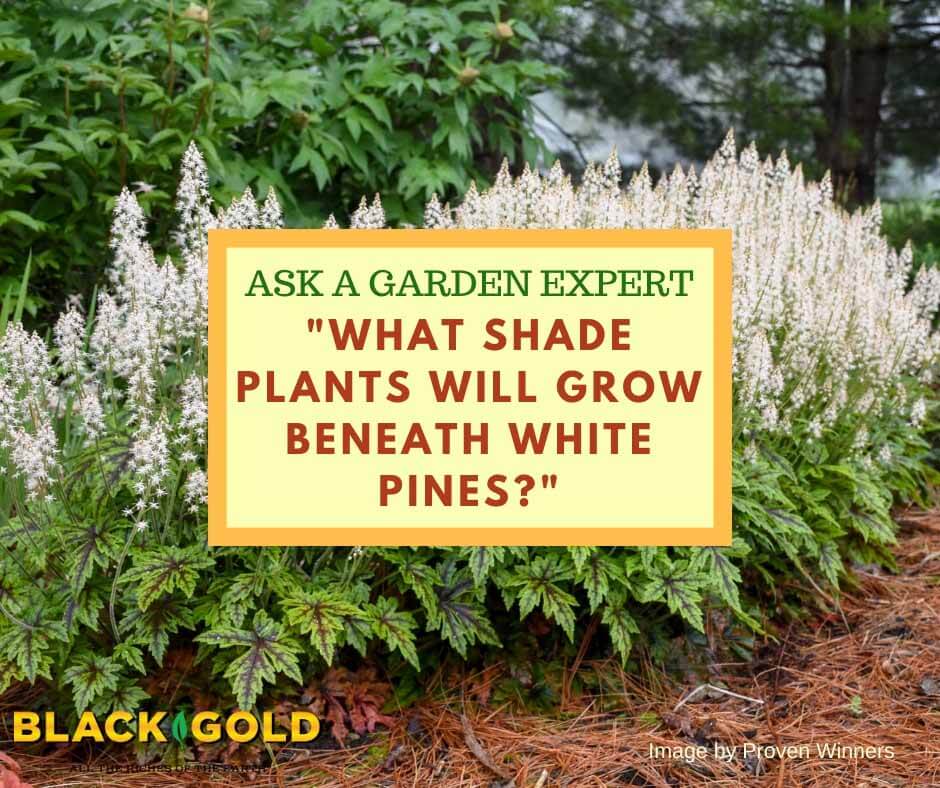
My backyard has lots of huge white pines that I want to landscape around. What plants grow best [beneath pines] in Midwest weather and [like] mostly shade? Question from Karen of Adel, Iowa
Answer: You are looking for shade-loving perennials and small shrubs adapted to slightly acid soils. There are quite a few that will grow well in your USDA Hardiness Zone 5 garden. Here are just a few suggestions.
Low Shrubs
Bearberry (Arctostaphylos uva-ursi): If you are interested in a ground-hugging evergreen shrub that spreads and has festive red berries in summer and fall, consider bearberry. It thrives in well-drained, acid soil and survives well under pine trees. It is also native to many areas in Iowa.
Lowbush Blueberry (Vaccinium angustifolium): Small, lowbush blueberries are perfect for edible landscaping, and they grow well in acid soils and shade. They also have attractive fall leaves that turn shades of orange and red.
Perennials
Foamflower (Tiarella spp.): These pretty spreading perennials have pretty foliage that looks attractive from spring to fall and foamy flowers that appear in late spring. Try the new Proven Winners variety ‘Cutting Edge’.
Heuchera (Heuchera hybrids): These may be commonly called coralbells or alumroot, and there are hundreds of varieties on the market with beautifully colored (gold, orange, burgundy, purple, red, etc.) and textured leaves. Some even send up wands of coral or white flowers. Terra Nova Nurseries develops some of the coolest varieties available.
Hostas (Hosta hybrids): Most hostas will grow beautifully in lightly shaded spots among conifers.
Lady Fern (Athyrium filix-femina): If you like ferns, this delicate looking native fern grows reliably well in slightly acid soil and shade. Just be sure to irrigate it during very dry spells.
Wild Ginger (Asarum canadense): Few native groundcovers for shade are as tough as wild ginger. It creates a mat of bright green, heart-shaped leaves that look attractive in shaded gardens. Expect clumps to spread to a few feet wide over time.
Wild Blue Phlox (Phlox divaticata): Blooming in mid to late spring, wild blue phlox bears airy stems of five-petaled, pale violet-blue flowers that are visited by butterflies and long-tongued bees. The variety ‘Blue Moon’ has especially large flowers of deep blue-violet. This one is also an Iowa native. Plants will spread and naturalize a bit over time.
You can begin planting any of these shrubs or perennials in mid-spring. Before planting, I recommend amending your garden soil with Black Gold Peat Moss and Garden Compost Blend. Be sure to feed plants with a fertilizer formulated for flowering plants at planting time as well. Then keep plants well-irrigated until they set fresh roots and begin to grow well on their own. This usually takes a couple of weeks. It is also wise to irrigate during long, hot, dry spells in summer.
Good luck with planting your new shade garden!
Jessie Keith
Black Gold Horticulturist
(Click here for some more shade perennial recommendations.)
(We also recommend that you read this article about evergreen ferns. Some would also work well in your garden.)

